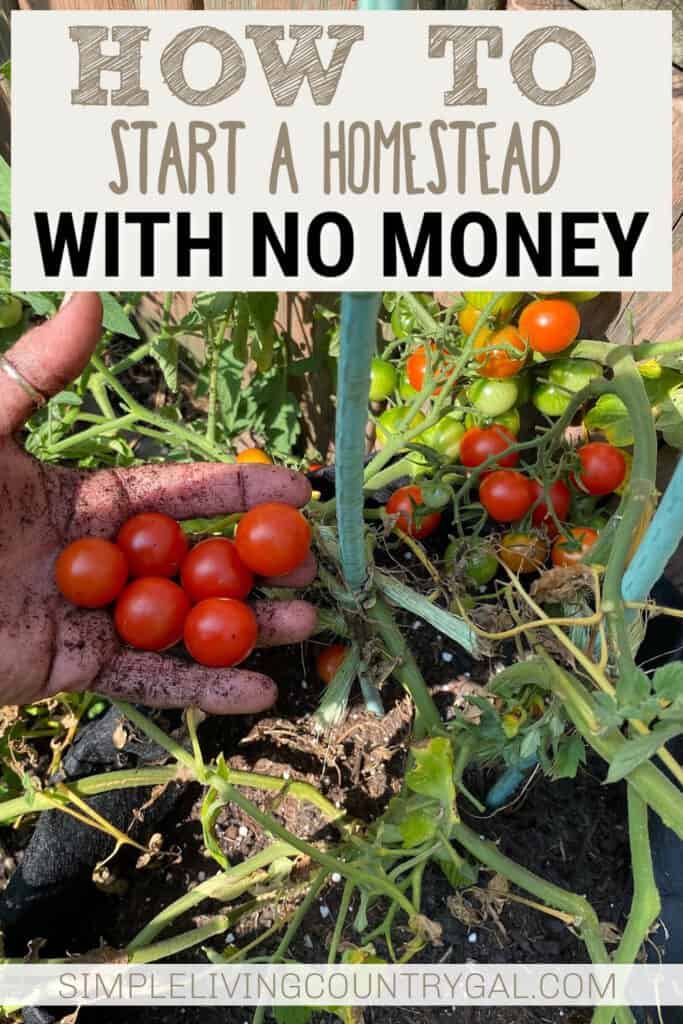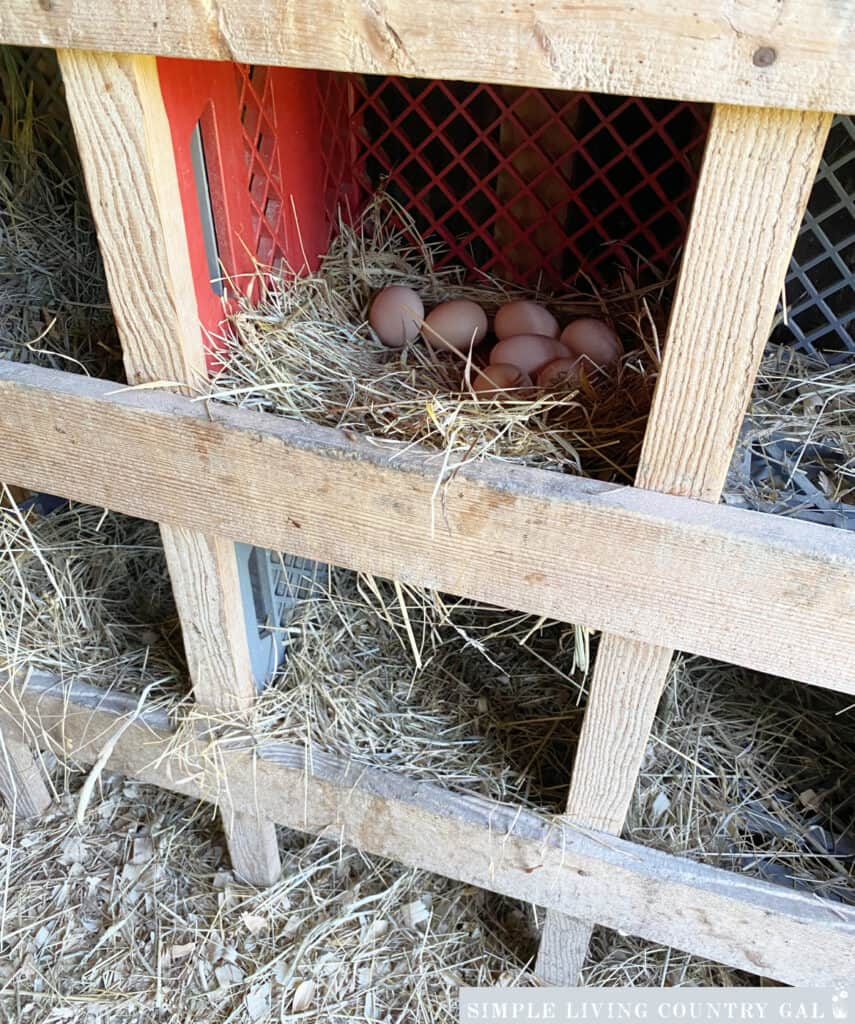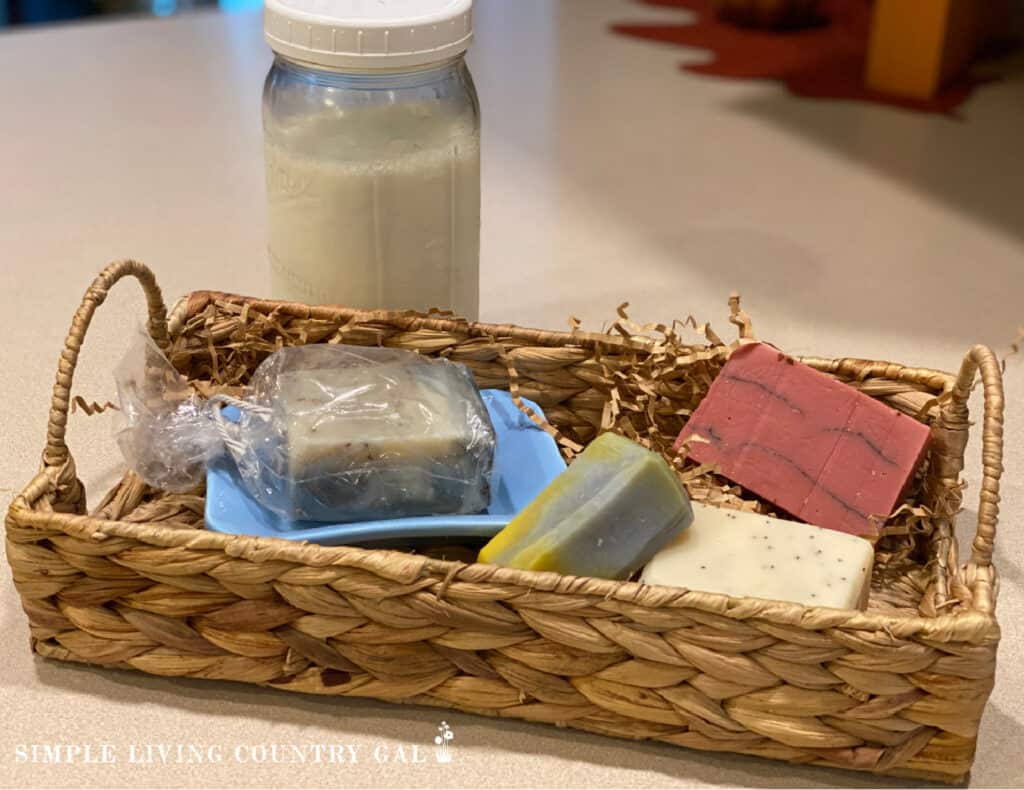Starting a homestead without money
If you love the idea of homesteading but are not a fan of the price tag, this article is for you! Get tips on starting a homestead without money and take that first step to becoming more self-sufficient.
Homesteading tips that you can hang your hat on. Tips that will help you take back control of your home and household.

Homesteading has long been a way of life for those looking to live more independently and sustainably. It can mean different things to different people, with food a common denominator for all.
The level of homesteading depends on the person. Some will grow their own food, while others will raise livestock for eggs, meat, and/or milk. Some will put all their focus into making what they need, such as clothes, cleaning products, or furniture. Whether a person chooses to do one or all of these homesteading practices, the goal is the same – to live off the land and become as self-sufficient as possible.
Many people are discouraged from starting a homestead because they believe it requires large parcels of land and money to get up and running. The good news is that this is no longer true. You can homestead anywhere and without much money starting out. And if you are willing to put in the work and make some sacrifices, you can take your first step towards a self-sufficient lifestyle today.

How to Start Homesteading Without Money
Starting out small will allow you to begin a homestead with little to no money. Here are a few ideas to get you started.
Grow Food in Containers
Growing food is the central part of a self-sufficient lifestyle; the good news is you do not need a traditional garden to do so. You can grow an entire garden by reusing buckets, flower pots, and even bulk food bags. As long as you have draining to let any excess water escape the container, you can use it to grow the food you love.
Make Your Own Cleaning Products
Creating your own cleaning products is both cost-effective and helps reduce the environmental impact of purchasing pre-made cleaners. All you need are a few basic ingredients like baking soda, vinegar, and essential oils to start making your own soap, detergent, dishwasher tablets, and more.
More DIY Resources:
Gather Your Own Firewood
Firewood is an essential part of any home looking for alternative heat options. You can find firewood for free by offering to clean up fallen trees. Many times people will offer the wood as payment for the labor.

Re-purpose Unused Items from Around the House
You can save money by re-purposing items you already have around the house. Get creative and think of ways to turn your old t-shirts into rugs, an old dresser drawer into a gardening bench, or broken dishes into mosaic designs.
Reduce Waste Disposal and Reuse Items
Aim to reduce your household’s trash and recycling by reusing items like glass jars, paper envelopes, and plastic food containers. Instead of tossing produce cuttings, you can put them into your compost bin.
Live Frugally with DIY Home Projects
DIY projects for home items can help reduce your spending. You can make things like candles, soaps, and even furniture from items you already have around the house or found second-hand at thrift stores. A bonus is you may be learning a new skill that you can teach to your children passing on this love of self-sufficiency.

Learn to Barter
Bartering is an age-old skill used by many homesteaders. Bartering is a system of exchange where goods or services are traded between two parties. This can be an efficient way to get the supplies needed without spending money. For example, you can trade a few homemade candles for potting soil that you can use in your container garden.
Learn a new Skill
A homesteader’s best friend is the local library. There you can find books on fermenting, woodworking, beekeeping, canning, and more. Make a goal to learn a new skill each season and watch your homestead skills multiply.
Love These Homesteading Books!
Goat Milk Soap Making: All Natural Homemade Goat Milk Soap Recipes for Sensitive Skin (Natural Goat Milk Soaps Book 1)


Where to find homestead tools for cheap or free
Local garage sales, flea markets, and thrift stores are great places to find homestead tools for cheap or even for free. Keep an eye out for tools like canning jars, cheesecloth, backyard garden tools, and more. These places are also a great way to meet people who practice homesteading in your area. You may be able to exchange skills and goods to help each other.
You can also look online at homesteading sites, Facebook marketplace, or Craigslist. Always be sure to use caution and safety when purchasing from anyone you do not know.
Homesteading is a great way to save money, learn new skills, and reduce your environmental footprint. With some careful planning and dedication, you can make it a sustainable lifestyle that allows your family to be self-sufficient. Through bartering, finding second-hand items for free or cheap, and learning new skills from the local library, you can achieve homesteading success.
There are many resources available to help you build your homestead from the ground up and enjoy a more sustainable way of life. So don’t be intimidated. Take that first step today and enjoy all the rewards that come with homesteading!
More Homesteading Resources:
- Checklist for Starting a Homestead
- 7 Steps to Take Before You Begin Your Homesteading Journey
- Homesteading on a Budget




